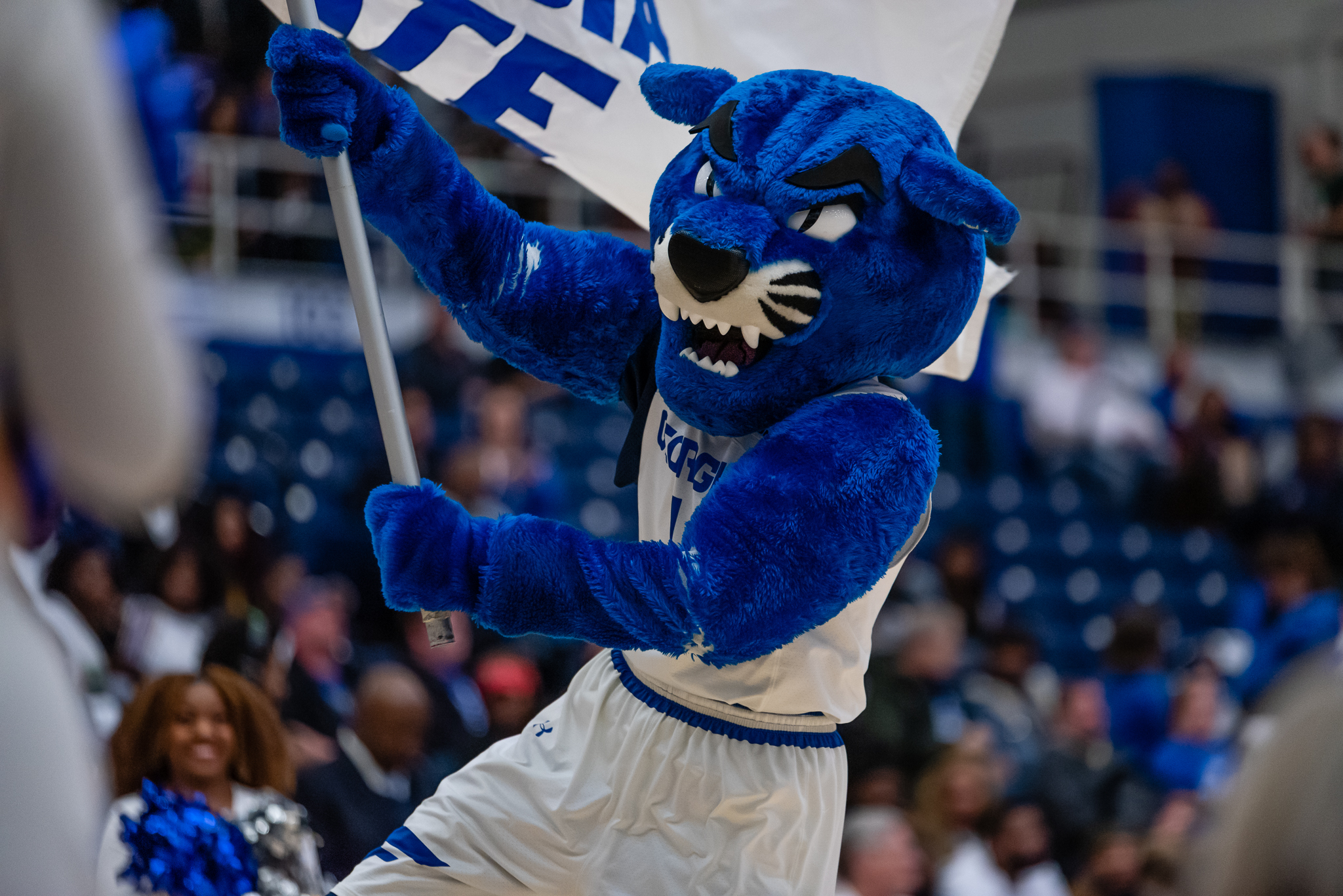
The Florida panther, the real animal behind Pounce, Georgia State’s iconic mascot, once prowled the whole southeast, mingling in small breeding communities and covering ground from Arkansas to Georgia to the tip of Florida.
In the early 1980s, only 40 Florida panthers were on Earth, largely thanks to human destruction of the panthers’ habitat and hunting. Now, about 120 of the creatures remain in a single breeding population in southern Florida.
The number of panthers is slowly increasing due to conservation efforts by the U.S. Fish & Wildlife Service and the Florida Fish and Wildlife Commission.
Georgia State displays Pounce on everything from sports team logos to casual apparel to university communications. While the university never explicitly stated that Pounce is a Florida panther, he bears the animal’s appearance in every aspect other than his iconic color.
Georgia State students may see Pounce as a lovable, familiar character, but many people, including ranchers and farmers, view Florida panthers as a nuisance. The panthers sometimes kill large cattle, contributing to the common view that the animals are dangerous. Some ranchers and landowners do everything they can to protect their land, killing panthers and hindering conservation efforts.
“Anti-Panther” pages on Facebook and other social media parrot misinformation about the Florida panther, describing the panthers as a threat to Florida residents. A panther has not attacked a human in Florida in over 100 years.
Still, as human and panther populations grow and cities expand, urbanization pushes the panthers into developed areas. As a result, some people do encounter the once-elusive creatures in southern Florida.
The U.S. Fish & Wildlife Service established the Florida Panther Recovery Plan in 2008 to protect the panthers from further destruction. The 233-page plan is a road map to “[achieving] viability of the Florida panther to a point where it can be reclassified from endangered to threatened, and then removed from the Federal list of endangered and threatened species.”
The plan’s main goals are to expand the Florida panthers’ range, reintroduce additional populations, and foster better public understanding and awareness of the panthers. Mark Davis, Public Affairs Representative for the National Fish & Wildlife Service, believes that Georgia State can help play a role in the plan.
“The panther, the mascot for Georgia State University, is an endangered animal [whose] habitat has been steadily decimated by development,” Davis said. “For too long, the panther was regarded as a nuisance, if not an outright danger, to humans.”
Davis suggested that Georgia State form a partnership with a leading conservation nonprofit to promote the panther’s welfare. The university could then donate a small percentage of sales proceeds of Georgia State paraphernalia, like panther shirts or caps, to habitat protection.
Georgia State does not currently donate to conservation efforts. ]
“[Wearing] panther pride could help protect and expand panther terrain,” Davis said.
